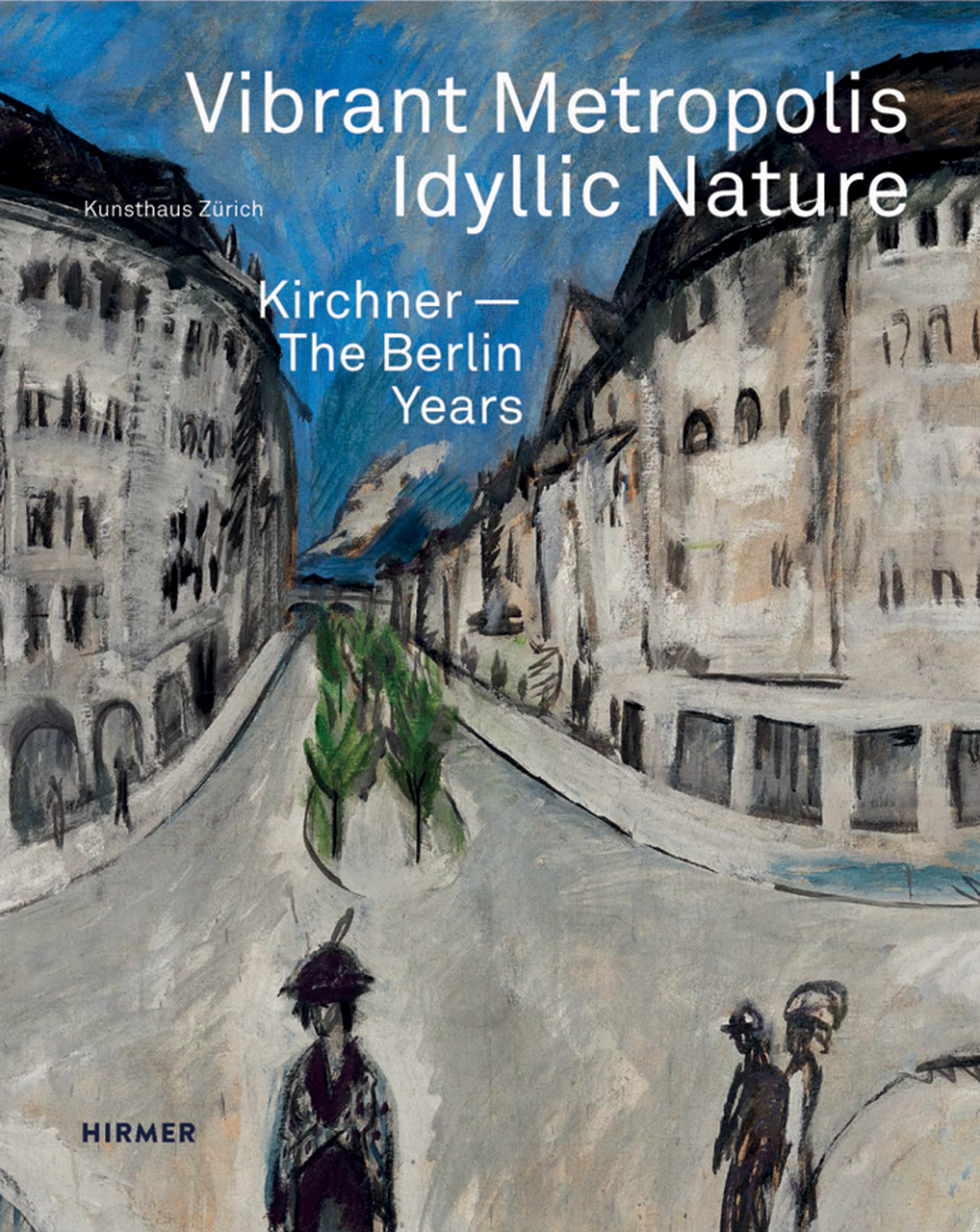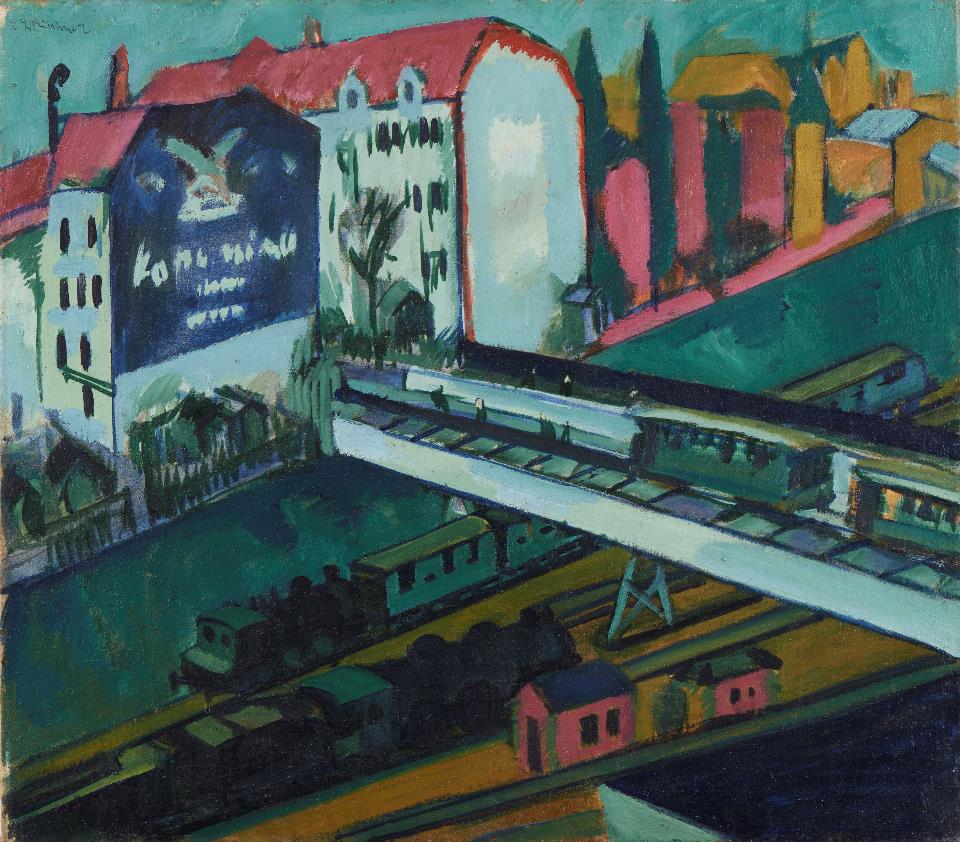Kunsthaus
Zürich
10 February to 7 May 2017
Catalogue
Switzerland
sees its first
major exhibition devoted to the Berlin years of Ernst Ludwig Kirchner
(1880–1938). The Kunsthaus Zürich has gathered together some 160
paintings, pastels, drawings, prints, sketchbooks and a selection of
textiles,
sculptures and photographs for a survey of Kirchner’s work in Germany’s
bustling capital city and on the idyllic Baltic Sea island of Fehmarn.
Between
1912 and 1914, these two contrasting places of inspiration marked the
high
point of Kirchner’s Expressionist oeuvre. The co-founder
of theartists’
association ‘Brücke’, who is best known in Switzerland for
his images of the ‘unspoilt’ mountain scenery around Davos, appears here
in
what, for Swiss audiences, is a less familiar, edgier guise.
LOANS
FROM BERLIN, SYDNEY, NEW YORK, MADRID .
The
Kunsthaus Zürich has teamed up with the renowned Brücke-Museum in Berlin to
bring together works on loan from many continents in a dialectical exploration
of Kirchner. Important exhibits come from the Städel (Frankfurt), the Pinakothek
der Moderne (Munich), the Museo Thyssen-Bornemisza (Madrid),the Guggenheim
Museum and Museum ofModern Art (both New York), the Getty Research Institute
(Los Angeles),the Art Gallery of New South Wales (Sydney) and the popular
Kirchner Museum Davos. Private lenders are supplying works that, in some cases,
have never before been shown in public. There is also a full-size reconstruction
of the mansard niche of Kirchner’s
second Berlin live-in studio –
again, for the first
time in Switzerland. The artist decorated it with textiles he designed himself,
featuring Fehmarn motifs.
BERLIN
AND FEHMARN: PLACES OF INSPIRATION
The
exhibition
is arranged chronologically, alternating between Berlin and Fehmarn –
the two places of inspiration. They are often viewed as
diametric opposites: on the one hand the frenetic lifestyle of a city
that
never rests, on the other the relaxing peace of a rural retreat; the
hardship
and alienation of the city dweller versus a harmonious existence in
union with
nature. Our exhibition, together with the accompanying catalogue,
presents
these two poles –metropolis and idyllic nature – as two conjoined
aspects of
Kirchner’s life and work. Both exemplify his longing for an existence
removed
from bourgeois norms and for a new and contemporary form of expression.
In
addition to exhibits from Kirchner’s time in Berlin, the presentation
also
includes a representative selection of his early paintings from Dresden
and
some of the first pieces produced in Switzerland. They provide the
context
without which it is impossible to comprehend the profound changes in
Kirchner’s
art between 1911 and 1917. The focused presentation investigates this
pivotal
phase in Kirchner’s work, and with it the socio-political changes of the
early
20th century.
EARLY
20TH-CENTURY ATTITUDES TO LIFE
Ernst
Ludwig
Kirchner’s move from Dresden to Berlin in autumn
1911 marks a turning point in his art. In the years from 1912 to 1915,
in
thrall to Europe’s most modern metropolis, the young
artist created works that, in their exaggerated and condensed way, can
be
regarded as metaphors for an early 20th-century attitude to life. In
this era
of radical transformation, the imperial capital held out the prospect of
progress and limitless potential, but also isolation and a struggle to
survive.
It was the centre of unbridled industrial growth, the rise of the
automobile
and, with two million inhabitants, the largest ‘tenement city’in Europe.
Yet
Berlin was also the metropolis of art, hedonism and prostitution. In
this
melting pot of opportunities and risks, Kirchner created works of
breathless,
existential directness that took aim squarely at Wilhelmine conventions.
His
motifs were also shaped by these observations: fashionably dressed
passers-by;
motorised traffic and industrial plants ‘eating’ their way through the
city; café and brothel scenes. Movement,
dynamism and multiple perspectives typify Kirchner’s work during the
Berlin
years, in what, looking back, he described as a ‘painting of motion’.
The prime
example – ‘Street, Berlin’ (1913) from the Museum of Modern Art, New
York – will be on show at the Kunsthaus, as will the double-sided
canvas ‘Two Women on the Street (recto)/‘Two Bathers in Surf’ (verso)
from the
Kunstsammlung Nordrhein-Westfalen, Düsseldorf.
GETTING
AWAY FROM IT AL
LIn
the summer months of 1912 to 1914, Kirchner left Berlin for the Baltic Sea island
of Fehmarn, which he already knew from an earlier visit. Here, together with
his new companion Erna Schilling and his fellow painters, he led an uninhibited
life close to nature. Far from the big city and freed from all conventions,
they enjoyed an Arcadian existence. It was in this idyll that, in 1912, he
painted the long-lost and recently rediscovered square painting ‘Mexico Bay, Fehmarn’,
which is in private ownership. The celebrated ‘Three Bathers’ (1913,
from the Art Gallery of New South Wales, Sydney) also bears witness to their bond
withnature. Contrasts of warm and cold, colours that range from muted to strong,
and dynamic forms express this exalted sense of harmony with nature.
ARMY
AND DRUGS: THE CRISIS
The
outbreak of the First World War took Kirchner by surprise during his 1914 summer
retreat on Fehmarn, forcing him to break off his stay abruptly and return to
Berlin. His army training as a field artilleryman in Halle and his general
experiences of war plunged him into a deep psychological and physical crisis in
1915, with large-scale alcohol and drug abuse threatening his artistic identity.
The works that arose despite –
or perhaps because of
– this crisis, such as the celebrated ‘Schlemihl’
woodcut cycle or the
drawing ‘Self-Portrait under the Influence of
Morphine’ (1917), made using a reed pen and ink
on gesso paper, form a further key focus of the exhibition. Following a number
of stays in sanatoria in Königstein, Berlinand Kreuzlingen, Kirchner moved to
Switzerland in 1918, embarking on his long road to recovery in the mountains of
Davos, where he remained until he took his own life in 1938. The exhibition
closes with this new turning point in Kirchner’s career.
KIRCHNER
AND THE KUNSTHAUS
The
Kunsthaus Zürich first exhibited works by Kirchner in a group exhibition in 1918,
from which two woodcuts were acquired. Projects for major solo shows in 1926 and
1936 did not come to fruition. After Kirchner’s death there were monograph exhibitions in 1952 and 1954
followed, in 1980, by the biggest retrospective to date. Now, a hundred years
on from Kirchner’s move to Switzerland, the Kunsthaus
Zürich is devoting an exhibition to the master of Expressionism, with a
particular focus on the Berlin years (1911–1917).
Kunsthaus
curator Dr. Sandra Gianfreda has designed the presentation together with Prof.
Magdalena M. Moeller, director of the Brücke-Museum, Berlin.
Catalogue
272 pages
|
210 color plates
|
8 1/2 x 10 1/2
Ernst
Ludwig Kirchner (1880–1938) was one of the most prolific and creative
members of the German expressionist movement. His move from Dresden to
Berlin in 1911 marked a turning point in his career and ignited the most
important and innovative period of his work. Ernst Ludwig Kirchner: The Berlin Years looks in-depth at this significant time during which he produced his most celebrated masterpieces.
As Sandra Gianfreda reveals, under the influence of the most modern metropolis in Europe, Kirchner created works whose exaggerated and condensed style could be regarded as a true metaphor for the attitude to life during the early years of the twentieth century. During this time of rapid change, Berlin was not only the center of industry, but it was a metropolis of the arts and encouraged a new kind of hedonism. Berlin vibrated with energy and intellectual questions that Kirchner channeled in his work, creating pictures of breathless, existential directness that challenged conventions of the age. An essential book for fans of Kirchner’s work, it presents his greatest paintings and demonstrates the profound changes in his style that were inspired by his time in Berlin.
As Sandra Gianfreda reveals, under the influence of the most modern metropolis in Europe, Kirchner created works whose exaggerated and condensed style could be regarded as a true metaphor for the attitude to life during the early years of the twentieth century. During this time of rapid change, Berlin was not only the center of industry, but it was a metropolis of the arts and encouraged a new kind of hedonism. Berlin vibrated with energy and intellectual questions that Kirchner channeled in his work, creating pictures of breathless, existential directness that challenged conventions of the age. An essential book for fans of Kirchner’s work, it presents his greatest paintings and demonstrates the profound changes in his style that were inspired by his time in Berlin.
- Ernst Ludwig Kirchner
Self-portrait in the live-in studio in Berlin-Friedenau, 1913/1915
Glass negative, 13 x 18 cm
Kirchner Museum Davos, Gift of the Estate of Ernst Ludwig Kirchner 2001
- Ernst Ludwig Kirchner
Artillerists’ Bath – Bathing Soldiers, 1915
Lithograph on yellow paper, 50.5 x 59.0/4 cm
E.W.K. Collection, Bern/Davos
Collection E.W.K., Bern / Davos


















